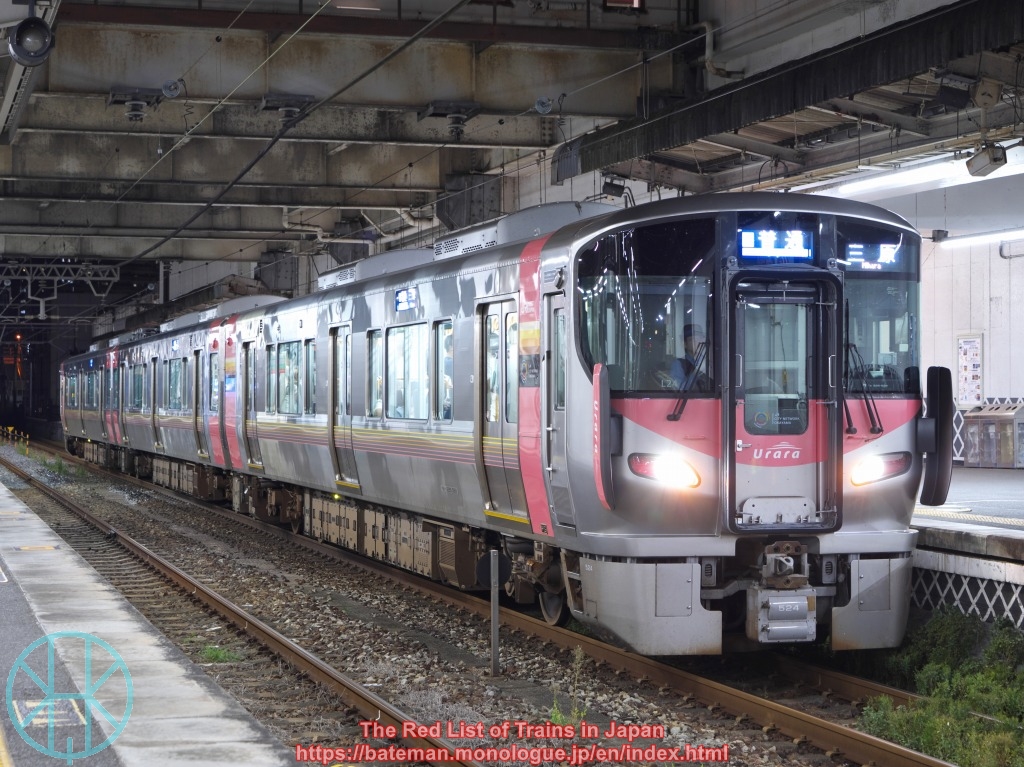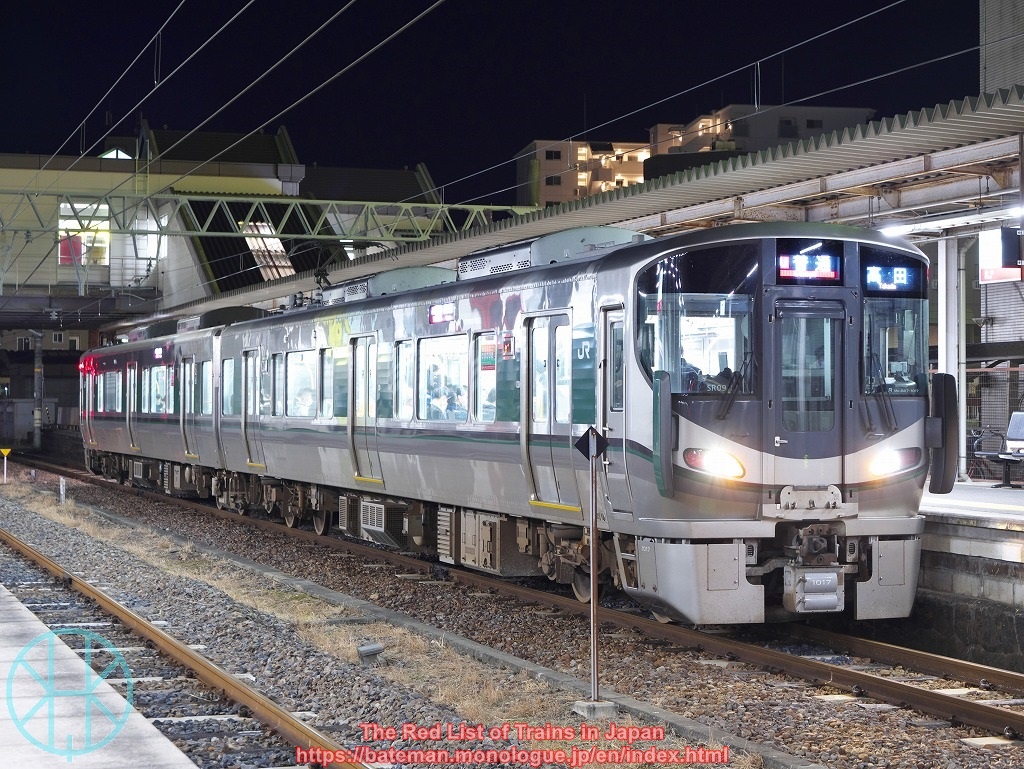JR West 227 series

Data (as of 29 Nov 2025)
| Status: | Least Concern |
| Constructed in: | 2014- |
| Number built: | 536 |
| Registered: | 533 |
History
The 227 series is a type of suburban train, based on 225 series. In the mid-2010s, there were considerable number of trains introduced by Japanese National Railways, many of which were 40 years old or even more. The company had been reluctant to modernise the services outside Osaka and surrounding areas, but concluded at last that replacing them was inevitable to enhance safety and reduce costs.
The 227 series was first introduced to Hiroshima area, replacing 103 series, 105 series, 113 series and 115 series. The 227 series in Hiroshima (variant 0) are painted red and named Red Wing. Two and three-carriage units were delivered to the area in 2014-19, being the first "brand new" trains in more than 32 years. They can be formed of up to eight coaches.
In 2018-20, 34 two-car units of the 227 series (variant 1000) were introduced to rural lines in Nara and Wakayama Prefectures, replacing the 105 series and 117 series. Unlike the variant 0 in Hiroshima, the variant 1000 is compatible with driver-only operation. Fleets of this group have longitudinal seating only despite being classified as a suburban train.
Since 2023, variant 500 has been introduced to Okayama area, replacing old trains including the 117 series. This variant is painted pink, and it is called Urara, a Japanese word describing a clear, warm and comfortable day.
Current Operations & Future Prospects
The variant 0 (Red Wing) is used for the almost of all electrified network in Hiroshima area, i.e. Kabe, Kure Lines and San-yo Main Line between Fukuyama and Shin-Yamaguchi.
The variant 500 (Urara) is used for Ako Line from Banshu-Ako to the west, Hakubi Line between Okayama and Niizato, Honshi-Bisan Line as far as Kojima, San-yo Main Line between Himeji and Mihara, and the entire Uno Line.
The variant 1000 is used on Kisei Main Line (also known as Kinokuni Line) between Wakayama and Shingu, Sakurai Line (also known as Man'yo Mahoroba Line) and Wakayama Line.
Photo

The Urara (variant 1000) is painted pink.

The 227 series in Nara and Wakayama areas (variant 1000) is dark green.
(Updated: 29 Nov 2025)
